AND
-
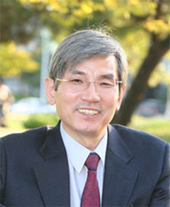 Storing Stably Hydrogen Atoms in Icy Materials Discovered
KAIST, Aug. 8, 2008 -- A KAIST research team led by Prof. Huen Lee of the Department of Chemical & Biomolecular Engineering has discovered that icy organic hydrates, which contain small cages that can trap guest molecules, can be used to create and trap hydrogen atoms at higher temperatures.
The properties and reactions of single hydrogen atoms are of great scientific interest because of their inherent quantum mechanical behavior; experimentally, they can be generated and stabilized at very low temperatures (4 K) by high-energy irradiation of solid molecular hydrogen.
The finding was reported in the journal of American Chemical Society and featured in the "Editor"s Choice" in the July 11 issue of Science as a recent research highlight.
Hydrogen is a clean and sustainable form of energy that can be used in mobile and stationary applications. Hydrogen has the potential to solve several major challenges today: depletion of fossil fuels, poor air quality, and green house gas emissions.
However, the trapping of hydrogen atoms in crystalline solid matrix has never been attempted mainly because of experimental difficulties in identifying the generated hydrogen atoms with either spectroscopic or microscopic technique.
"To overcome the barriers and limitations of the existing storage approaches, we have continuously attempted to find the new hydrogen storage media such as icy powders and other related inclusion compounds," said Prof. Lee
The discovery follows the breakthrough concept Prof. Lee"s research team proposed in Nature in 2005 to use pure ice to capture and store hydrogen molecules. At moderate temperature and pressure conditions small guest molecules are entrapped in pure ice powders to form the mixed icy hydrate materials.
"Stable existence of single hydrogen molecule/radical in icy crystalline matrices may offer significant advantages in exploring hydrogen as a quantum medium because icy hydrogen hydrates can be formed at milder conditions when compared with pure solid hydrogen, which requires the ultra low temperature of 4.2 K," said Prof. Lee.
The novel design and synthesis of ionic and radicalized icy hydrates are expected to open a new field for inclusion chemistry and ice-based science and technology. Specifically, the fact that hydrogen atoms can be stably stored in icy materials might provide versatile and practical applications to energy devices including fuel cells, ice-induced reactions, and novel energy storage process, according to the KAIST professor.
2008.08.07 View 14589
Storing Stably Hydrogen Atoms in Icy Materials Discovered
KAIST, Aug. 8, 2008 -- A KAIST research team led by Prof. Huen Lee of the Department of Chemical & Biomolecular Engineering has discovered that icy organic hydrates, which contain small cages that can trap guest molecules, can be used to create and trap hydrogen atoms at higher temperatures.
The properties and reactions of single hydrogen atoms are of great scientific interest because of their inherent quantum mechanical behavior; experimentally, they can be generated and stabilized at very low temperatures (4 K) by high-energy irradiation of solid molecular hydrogen.
The finding was reported in the journal of American Chemical Society and featured in the "Editor"s Choice" in the July 11 issue of Science as a recent research highlight.
Hydrogen is a clean and sustainable form of energy that can be used in mobile and stationary applications. Hydrogen has the potential to solve several major challenges today: depletion of fossil fuels, poor air quality, and green house gas emissions.
However, the trapping of hydrogen atoms in crystalline solid matrix has never been attempted mainly because of experimental difficulties in identifying the generated hydrogen atoms with either spectroscopic or microscopic technique.
"To overcome the barriers and limitations of the existing storage approaches, we have continuously attempted to find the new hydrogen storage media such as icy powders and other related inclusion compounds," said Prof. Lee
The discovery follows the breakthrough concept Prof. Lee"s research team proposed in Nature in 2005 to use pure ice to capture and store hydrogen molecules. At moderate temperature and pressure conditions small guest molecules are entrapped in pure ice powders to form the mixed icy hydrate materials.
"Stable existence of single hydrogen molecule/radical in icy crystalline matrices may offer significant advantages in exploring hydrogen as a quantum medium because icy hydrogen hydrates can be formed at milder conditions when compared with pure solid hydrogen, which requires the ultra low temperature of 4.2 K," said Prof. Lee.
The novel design and synthesis of ionic and radicalized icy hydrates are expected to open a new field for inclusion chemistry and ice-based science and technology. Specifically, the fact that hydrogen atoms can be stably stored in icy materials might provide versatile and practical applications to energy devices including fuel cells, ice-induced reactions, and novel energy storage process, according to the KAIST professor.
2008.08.07 View 14589 -
 KAIST Professor Named International Research Grant Reviewer
Prof. Kwang-Hyun Cho of the Department of Bio and Brain Engineering, KAIST, was appointed as a research grant review committee member of the international Human Frontier Science Program (HFSP) for 2008-2009, university authorities reported.
The HFSP is a funding agency that supports international collaboration in interdisciplinary, basic research in the life sciences. It was initiated in 1989 by G7 countries as the sole funding program for international researches in neuroscience and molecular biology. The HFSP now has a membership of 35 countries and Korea joined the program in 2004. Prof. Cho will be responsible for reviewing grant applications in the field of systems biology.
Prof. Cho received B.S., M.S. and Ph.D. degrees in electrical engineering from KAIST in 1993, 1995, and 1998, respectively. He has been working as a director of the KAIST Institute for the BioCentury and KAIST"s Laboratory for Systems Biology and Bio-Inspired Engineering. He has been serving on editorial advisory boards of various international science journals, including Systems and Synthetic Biology (Springer, Netherlands, from 2006), BMC Systems Biology (BMC, London, U.K., from 2007) and Gene Regulation and Systems Biology (Libertas Academica, New Zealand, from 2007).
He is a senior member of the Engineering in Medicine and Biology Society (EMBS) affiliated with the Institute of Electronics and Electrical Engineers (IEEE). His research interests cover the areas of systems science with bio-medical applications, especially systems biology and bio-inspired engineering based on molecular systems biology.
2008.07.18 View 20446
KAIST Professor Named International Research Grant Reviewer
Prof. Kwang-Hyun Cho of the Department of Bio and Brain Engineering, KAIST, was appointed as a research grant review committee member of the international Human Frontier Science Program (HFSP) for 2008-2009, university authorities reported.
The HFSP is a funding agency that supports international collaboration in interdisciplinary, basic research in the life sciences. It was initiated in 1989 by G7 countries as the sole funding program for international researches in neuroscience and molecular biology. The HFSP now has a membership of 35 countries and Korea joined the program in 2004. Prof. Cho will be responsible for reviewing grant applications in the field of systems biology.
Prof. Cho received B.S., M.S. and Ph.D. degrees in electrical engineering from KAIST in 1993, 1995, and 1998, respectively. He has been working as a director of the KAIST Institute for the BioCentury and KAIST"s Laboratory for Systems Biology and Bio-Inspired Engineering. He has been serving on editorial advisory boards of various international science journals, including Systems and Synthetic Biology (Springer, Netherlands, from 2006), BMC Systems Biology (BMC, London, U.K., from 2007) and Gene Regulation and Systems Biology (Libertas Academica, New Zealand, from 2007).
He is a senior member of the Engineering in Medicine and Biology Society (EMBS) affiliated with the Institute of Electronics and Electrical Engineers (IEEE). His research interests cover the areas of systems science with bio-medical applications, especially systems biology and bio-inspired engineering based on molecular systems biology.
2008.07.18 View 20446 -
 KAIST to hold 2008 Int
KAIST, Korea"s premier science and technology research university, will hold the 1st International Presidential Forum on Global Research Universities at the Westin Chosun Hotel in Seoul on Sept. 8, 2008. Presidents of research universities in all regions of the world have been invited to the conference aimed primarily at identifying common issues and opportunities in strengthening globalization of higher education and research.
Participants in the forum will exchange views and ideas on how to build and utilize global research network to promote the sharing of expertise and facilities, conduct joint researches and effectively implement dual degree and roaming professorship programs.
KAIST President Dr. Nam P. Suh said of the purpose of the conference: "Research universities have become global enterprises. Collaborations that were once primarily between individual researchers are now increasingly occurring at institutional and international levels. Similarly, educating students which used to be the responsibility of a single university has now become a multi-institutional undertaking, involving many universities in different countries.
"Now leading research universities in many countries depend on the continuous supply of outstanding graduate students form the "feeder" schools of developing nations. There are concerns that the current system may not be serving the interest and need of some institutions, especially those in developing nations. This should be examined and understood to devise international mechanisms that can accentuate the positive aspects of globalization.
"Through this forum, we hope to forge an international network of universities that will strengthen the effort of individual universities and create alliances for research and education that can become a new paradigm for global collaboration."
Keynote presentations will be made on the following five major subjects: -- Roaming Professorship-- Dual Degree Program-- Sharing Facilities and Expertise-- Joint Research, and-- Globalization through Interfacing with Existing Networking
Leaders of the world"s major education and research institutions have been asked to lead panel discussions with their rich experiences in globalization programs.
Following the conference in Seoul, participants are invited to come to the KAIST campus in Daejeon, about 150 kilometers from Seoul, where a symposium on EEWS (environment, energy, water and sustainability) will be held to examine the progress in interdisciplinary research activities in these vital problems facing the mankind and look for a new direction in international collaboration.
Co-sponsors of the International Presidential Forum include the Dong-A Ilbo, a major national daily, and the Dong-A Science Magazine.
Message from KAIST President Suh:
Research universities have become global enterprises. Collaborations that were once primarily between individual researchers are now increasingly occurring at institutional and international levels. Similarly, educating students used to be the responsibility of a single university but has now become a multiinstitutional undertaking, involving many universities in different countries.
These changes are a consequence of globalization and integration of the world’s economy. Temporal andgeographical separations are no longer barriers to the collective generation and transfer of knowledge andenlightened education. It is also a natural response to the demand for educated workforce who can functionin any country.
Current globalization was preceded by the migration of graduate students who were seeking to fulfill theiraspirations for better education at the world’s leading universities. This international movement of studentshas benefited not only students but research universities as well. Now leading research universities in manycountries depend on the continuous supply of outstanding graduate students from the “feeder” schools ofdeveloping nations.
There are some concerns that the current system may not be serving the interest and need of some institutions,especially those in developing nations. This should be examined and understood to devise institutionalmechanisms that can accentuate the positive aspects of globalization.
The purpose of the International Forum of Research University Presidents, which will be held on Sept. 8 inSeoul, Korea, is to identify common issues and opportunities for research universities that further strengthenglobalization of higher education and research. Participants will hear diverse views and ideas and will learnfrom those who have been active in global education and research. Participants also will examine dualdegree programs that are already in place among many universities and the effective implementation of aglobal research network.
Through this process, we hope to forge an international network of universities that will strengthen the effortof individual universities and create alliances for research and education that can become a new paradigm forglobal collaboration.
Looking forward to meeting you in Seoul,
Prof. Nam P. SuhPresidentKAIST
Tentative Program(Theme: Global Science and Technology Networking)
Sept. 7, 2008, Sunday 17:00 - 18:30 RegistrationSept. 8, 2008, Monday09:00 - 09:10 Opening Ceremony09:10 - 09:40 I. Keynote Presentation: Roaming Professorship09:40 - 10:20 Panel Presentations:- Improving the competitiveness of global university education- Sharing differences in culture and environment for sustainable education for the future generation- Promoting science and engineering education among secondary students- Preserving and utilizing expert knowledge for better education10:20 - 10:40 Open Discussion10:40 - 11:00 Coffee Break11:00 - 11:30 II. Keynote Presentation: Dual Degree Program11:30 - 12:10 Panel Presentations:- Benefits of dual degree program- The role of dual degree program easing brain drain- Global branch campus or dual degree program?- Raising international IQs of scientists and engineers for global enterprises12:10 - 12:30 Open Discussion12:30 - 14:00 Luncheon14:00 - 14:30 III. Keynote Presentation: Sharing Facilities and Expertise14:30 - 15:10 Panel presentations:- How to spin off international joint ventures from the sharing of research facilities and expertise- Economic benefits of sharing research facilities and expertise- How to communicate science and technology agenda to political leaders- Easing the gap between the developed and less developed regions through science and technology cooperation15:10 - 15:30 Open Discussion15:30 - 16:00 IV. Keynote Presentation: Joint Research16:00 - 16:40 Panel Presentations:- Benefits of international joint project- Ways to formulate the international joint projects- Sharing intellectual property rights- Global economic and social contributions of international joint project cooperation16:40 - 17:00 Open Discussion17:00 - 17:30 Coffee Break17:30 - 18:00 V. Keynote Presentation: Globalization through Interfacing with Existing Networking18:00 - 18:40 Panel Presentations:- Establishing global science and technology networking- The role of global science and technology networking for the higher education of the next century- Regionalized or globalized science and technology networking- Connecting regional science and technology networks for the global networking18:40 - 19:00 Open Discussion19:00 - 19:15 Closing Remarks by President Suh19:15 - 21:30 Banquet
Venue: Westin Chosun Hotel, Seoul
2008.07.17 View 20350
KAIST to hold 2008 Int
KAIST, Korea"s premier science and technology research university, will hold the 1st International Presidential Forum on Global Research Universities at the Westin Chosun Hotel in Seoul on Sept. 8, 2008. Presidents of research universities in all regions of the world have been invited to the conference aimed primarily at identifying common issues and opportunities in strengthening globalization of higher education and research.
Participants in the forum will exchange views and ideas on how to build and utilize global research network to promote the sharing of expertise and facilities, conduct joint researches and effectively implement dual degree and roaming professorship programs.
KAIST President Dr. Nam P. Suh said of the purpose of the conference: "Research universities have become global enterprises. Collaborations that were once primarily between individual researchers are now increasingly occurring at institutional and international levels. Similarly, educating students which used to be the responsibility of a single university has now become a multi-institutional undertaking, involving many universities in different countries.
"Now leading research universities in many countries depend on the continuous supply of outstanding graduate students form the "feeder" schools of developing nations. There are concerns that the current system may not be serving the interest and need of some institutions, especially those in developing nations. This should be examined and understood to devise international mechanisms that can accentuate the positive aspects of globalization.
"Through this forum, we hope to forge an international network of universities that will strengthen the effort of individual universities and create alliances for research and education that can become a new paradigm for global collaboration."
Keynote presentations will be made on the following five major subjects: -- Roaming Professorship-- Dual Degree Program-- Sharing Facilities and Expertise-- Joint Research, and-- Globalization through Interfacing with Existing Networking
Leaders of the world"s major education and research institutions have been asked to lead panel discussions with their rich experiences in globalization programs.
Following the conference in Seoul, participants are invited to come to the KAIST campus in Daejeon, about 150 kilometers from Seoul, where a symposium on EEWS (environment, energy, water and sustainability) will be held to examine the progress in interdisciplinary research activities in these vital problems facing the mankind and look for a new direction in international collaboration.
Co-sponsors of the International Presidential Forum include the Dong-A Ilbo, a major national daily, and the Dong-A Science Magazine.
Message from KAIST President Suh:
Research universities have become global enterprises. Collaborations that were once primarily between individual researchers are now increasingly occurring at institutional and international levels. Similarly, educating students used to be the responsibility of a single university but has now become a multiinstitutional undertaking, involving many universities in different countries.
These changes are a consequence of globalization and integration of the world’s economy. Temporal andgeographical separations are no longer barriers to the collective generation and transfer of knowledge andenlightened education. It is also a natural response to the demand for educated workforce who can functionin any country.
Current globalization was preceded by the migration of graduate students who were seeking to fulfill theiraspirations for better education at the world’s leading universities. This international movement of studentshas benefited not only students but research universities as well. Now leading research universities in manycountries depend on the continuous supply of outstanding graduate students from the “feeder” schools ofdeveloping nations.
There are some concerns that the current system may not be serving the interest and need of some institutions,especially those in developing nations. This should be examined and understood to devise institutionalmechanisms that can accentuate the positive aspects of globalization.
The purpose of the International Forum of Research University Presidents, which will be held on Sept. 8 inSeoul, Korea, is to identify common issues and opportunities for research universities that further strengthenglobalization of higher education and research. Participants will hear diverse views and ideas and will learnfrom those who have been active in global education and research. Participants also will examine dualdegree programs that are already in place among many universities and the effective implementation of aglobal research network.
Through this process, we hope to forge an international network of universities that will strengthen the effortof individual universities and create alliances for research and education that can become a new paradigm forglobal collaboration.
Looking forward to meeting you in Seoul,
Prof. Nam P. SuhPresidentKAIST
Tentative Program(Theme: Global Science and Technology Networking)
Sept. 7, 2008, Sunday 17:00 - 18:30 RegistrationSept. 8, 2008, Monday09:00 - 09:10 Opening Ceremony09:10 - 09:40 I. Keynote Presentation: Roaming Professorship09:40 - 10:20 Panel Presentations:- Improving the competitiveness of global university education- Sharing differences in culture and environment for sustainable education for the future generation- Promoting science and engineering education among secondary students- Preserving and utilizing expert knowledge for better education10:20 - 10:40 Open Discussion10:40 - 11:00 Coffee Break11:00 - 11:30 II. Keynote Presentation: Dual Degree Program11:30 - 12:10 Panel Presentations:- Benefits of dual degree program- The role of dual degree program easing brain drain- Global branch campus or dual degree program?- Raising international IQs of scientists and engineers for global enterprises12:10 - 12:30 Open Discussion12:30 - 14:00 Luncheon14:00 - 14:30 III. Keynote Presentation: Sharing Facilities and Expertise14:30 - 15:10 Panel presentations:- How to spin off international joint ventures from the sharing of research facilities and expertise- Economic benefits of sharing research facilities and expertise- How to communicate science and technology agenda to political leaders- Easing the gap between the developed and less developed regions through science and technology cooperation15:10 - 15:30 Open Discussion15:30 - 16:00 IV. Keynote Presentation: Joint Research16:00 - 16:40 Panel Presentations:- Benefits of international joint project- Ways to formulate the international joint projects- Sharing intellectual property rights- Global economic and social contributions of international joint project cooperation16:40 - 17:00 Open Discussion17:00 - 17:30 Coffee Break17:30 - 18:00 V. Keynote Presentation: Globalization through Interfacing with Existing Networking18:00 - 18:40 Panel Presentations:- Establishing global science and technology networking- The role of global science and technology networking for the higher education of the next century- Regionalized or globalized science and technology networking- Connecting regional science and technology networks for the global networking18:40 - 19:00 Open Discussion19:00 - 19:15 Closing Remarks by President Suh19:15 - 21:30 Banquet
Venue: Westin Chosun Hotel, Seoul
2008.07.17 View 20350 -
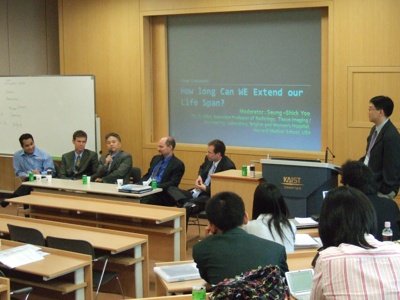 Int'l Conference for Integration of Science & Technology into Society Opens
The 2008 International Conference for the Integration of Science and Technology into Society (ICISTS-KAIST) opened a four-day meeting on Tuesday (July 15) at Daejeon KAIST campus. The conference is an annual event organized by a group of KAIST undergraduate students.
The fifth-year gathering is designed to provide participants with an opportunity to broaden their scientific perspectives by sharing ideas and experiences in related topics, as well as building an international human network. This year"s event has drawn about 200 students from 40 countries.
The centerpiece of the conference is three workshops on the following themes; Human-Robot Symbiotic Society, Neo-brain Science and Trafficmatics. Myung-Ja Kim, former Korean Environment Minister, will appear as a keynote speaker.
In the workshop sessions, two speakers will discuss specific issues and arrive at a tentative conclusion. Participants will have the opportunity to participate in the debate through Q&A for each session.
The first theme "Human-Robot Symbiotic Society" delves into the current trend that robot is being transformed into a perceivable and touchable concept from an abstract one. Guests for the workship include June-Ho Oh, professor at the Department of Mechanical Engineering, KAIST; James Dater, professor at the Department of Political Science, University of Hawaii at Manoa, and Director of the Hawaii Research Center for Future; Michael Pollitt, CEO of Shadow Robot Company; and Steven Dubowsky, professor at the Department of Mechanical Engineering, MIT.
The second theme "Neo-Brain Science" focuses on attempts to shed light on brain from diverse perspectives including psychology, economics and art. Among invited speakers are Prof. Jai-Seung Jung at the Department of Bio and Brain Engineering, KAIST; Prof. Un-Jung Kang at the University of Chicago Medical Center; and Peter Geyer, a consultant for the Association for Psychological Type.
The third workshop on "Traffimatics" will deal with "intelligent transport systems (ITS)" which will discusst new paradigm in transportation policy and traffic engineering. On the list of speakers are Assaf Biderman, assistant director, SENSEable City Laboratory, MIT; Prof. Richard Tay, at the Department of Civil Engineering, University of Calgary; Prof. Shoshi Mizokami at Kumamoto University; and Ho-Jong Baik, research associate professor of Virginia Tech.
2008.07.16 View 21087
Int'l Conference for Integration of Science & Technology into Society Opens
The 2008 International Conference for the Integration of Science and Technology into Society (ICISTS-KAIST) opened a four-day meeting on Tuesday (July 15) at Daejeon KAIST campus. The conference is an annual event organized by a group of KAIST undergraduate students.
The fifth-year gathering is designed to provide participants with an opportunity to broaden their scientific perspectives by sharing ideas and experiences in related topics, as well as building an international human network. This year"s event has drawn about 200 students from 40 countries.
The centerpiece of the conference is three workshops on the following themes; Human-Robot Symbiotic Society, Neo-brain Science and Trafficmatics. Myung-Ja Kim, former Korean Environment Minister, will appear as a keynote speaker.
In the workshop sessions, two speakers will discuss specific issues and arrive at a tentative conclusion. Participants will have the opportunity to participate in the debate through Q&A for each session.
The first theme "Human-Robot Symbiotic Society" delves into the current trend that robot is being transformed into a perceivable and touchable concept from an abstract one. Guests for the workship include June-Ho Oh, professor at the Department of Mechanical Engineering, KAIST; James Dater, professor at the Department of Political Science, University of Hawaii at Manoa, and Director of the Hawaii Research Center for Future; Michael Pollitt, CEO of Shadow Robot Company; and Steven Dubowsky, professor at the Department of Mechanical Engineering, MIT.
The second theme "Neo-Brain Science" focuses on attempts to shed light on brain from diverse perspectives including psychology, economics and art. Among invited speakers are Prof. Jai-Seung Jung at the Department of Bio and Brain Engineering, KAIST; Prof. Un-Jung Kang at the University of Chicago Medical Center; and Peter Geyer, a consultant for the Association for Psychological Type.
The third workshop on "Traffimatics" will deal with "intelligent transport systems (ITS)" which will discusst new paradigm in transportation policy and traffic engineering. On the list of speakers are Assaf Biderman, assistant director, SENSEable City Laboratory, MIT; Prof. Richard Tay, at the Department of Civil Engineering, University of Calgary; Prof. Shoshi Mizokami at Kumamoto University; and Ho-Jong Baik, research associate professor of Virginia Tech.
2008.07.16 View 21087 -
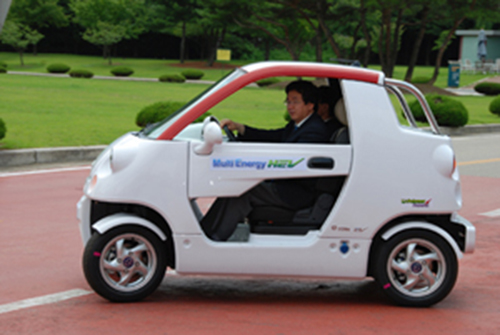 KAIST, CT&T Develop Multi-Energy Hybrid Electric Car
KAIST exchanged a memorandum of understanding for the development and production of a multi-energy plug-in hybrid electric car (ME-PHEV) with CT&T, an electric car maker, on Monday (June 30).
The ME-PHEV is a new vehicle model incorporating a small electric generator and solar energy as power source with conventional plug-in hybrid electric vehicle with rechargeable batteries. The new vehicle has been jointly developed by a research team led by Profs. Soon-Heung Chang and Yong-Hoon Chung, at the department of nuclear and quantum engineering, KAIST, and CT&T.
The ME-PHEV features an increased mileage, improved battery durability and better passenger convenience compared to conventional hybrid vehicles. The joint developers have applied for domestic and international patents.
Prior to the MOU signing ceremony, Prof. Chang, who is also a vice president of KAIST, had a trial ride of the vehicle for the media at the KAIST campus.
"Major car makers of the world currently focus on developing hybrid electric vehicles with battery and internal combustion engine. Compared to these cars, the ME-PHEV offers advantage in terms of reduced air pollution and lowered production costs," said Prof. Chang.
Under the agreement, CT&T will put the features of ME-PHEV into e-Zone, the company"s city-class, low-speed electric vehicle model, with a schedule go into commercial production of the car next year.
2008.07.02 View 16772
KAIST, CT&T Develop Multi-Energy Hybrid Electric Car
KAIST exchanged a memorandum of understanding for the development and production of a multi-energy plug-in hybrid electric car (ME-PHEV) with CT&T, an electric car maker, on Monday (June 30).
The ME-PHEV is a new vehicle model incorporating a small electric generator and solar energy as power source with conventional plug-in hybrid electric vehicle with rechargeable batteries. The new vehicle has been jointly developed by a research team led by Profs. Soon-Heung Chang and Yong-Hoon Chung, at the department of nuclear and quantum engineering, KAIST, and CT&T.
The ME-PHEV features an increased mileage, improved battery durability and better passenger convenience compared to conventional hybrid vehicles. The joint developers have applied for domestic and international patents.
Prior to the MOU signing ceremony, Prof. Chang, who is also a vice president of KAIST, had a trial ride of the vehicle for the media at the KAIST campus.
"Major car makers of the world currently focus on developing hybrid electric vehicles with battery and internal combustion engine. Compared to these cars, the ME-PHEV offers advantage in terms of reduced air pollution and lowered production costs," said Prof. Chang.
Under the agreement, CT&T will put the features of ME-PHEV into e-Zone, the company"s city-class, low-speed electric vehicle model, with a schedule go into commercial production of the car next year.
2008.07.02 View 16772 -
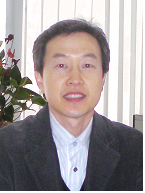 Super-Fast Internet Data Chip Developed
A KAIST research team led by Prof. Kyoung-Hoon Yang of the Electrical Engineering & Computer Science Department developed a super-fast chip that could lead to huge advancements in broadband Internet technology, the Korean Ministry of Education, Science and Technology said on Thursday (June 26).
The multiplexer chip is the first of its kind to be developed using the quantum effect of resonant tunnelling diode, according to the Ministry.
The integrated circuit chip built at the university laboratory has an operating speed of 45 gigabits per second (Gb/s), while using roughly 75 percent less energy than the previous version. The speed enables the transfer of about 4 full-length movies in one second.
The best operational broadband Internet services provide users with data transfer speed of 40 Gb/s, while most other high-speed online connections offer 10 Gb/s.
"Besides speed, the greatest achievement is low energy use," Prof. Yang said. He stressed that energy use in chips is a crucial factor because power creates heat that can melt circuits and make them inoperable.
"By cutting down on energy use, the new chips can be made smaller and with faster data transfer speed," the scientist said.
He added that efforts are underway to increase operational speed to 100 Gb/s, with energy consumption to be cut to 10 percent of current chips like the high electron mobility transistor, the heterojunction bipolar transistor and the complementary metal oxide semiconductor.
The researcher speculated that such revolutionary chips could be developed in 1-2 years and become the new benchmark in this field since existing chips have limited development capabilities.
The project has received funding from the Education-Science-Technology Ministry since 2000. The Ministry"s financial support will last until 2010.
2008.06.26 View 14190
Super-Fast Internet Data Chip Developed
A KAIST research team led by Prof. Kyoung-Hoon Yang of the Electrical Engineering & Computer Science Department developed a super-fast chip that could lead to huge advancements in broadband Internet technology, the Korean Ministry of Education, Science and Technology said on Thursday (June 26).
The multiplexer chip is the first of its kind to be developed using the quantum effect of resonant tunnelling diode, according to the Ministry.
The integrated circuit chip built at the university laboratory has an operating speed of 45 gigabits per second (Gb/s), while using roughly 75 percent less energy than the previous version. The speed enables the transfer of about 4 full-length movies in one second.
The best operational broadband Internet services provide users with data transfer speed of 40 Gb/s, while most other high-speed online connections offer 10 Gb/s.
"Besides speed, the greatest achievement is low energy use," Prof. Yang said. He stressed that energy use in chips is a crucial factor because power creates heat that can melt circuits and make them inoperable.
"By cutting down on energy use, the new chips can be made smaller and with faster data transfer speed," the scientist said.
He added that efforts are underway to increase operational speed to 100 Gb/s, with energy consumption to be cut to 10 percent of current chips like the high electron mobility transistor, the heterojunction bipolar transistor and the complementary metal oxide semiconductor.
The researcher speculated that such revolutionary chips could be developed in 1-2 years and become the new benchmark in this field since existing chips have limited development capabilities.
The project has received funding from the Education-Science-Technology Ministry since 2000. The Ministry"s financial support will last until 2010.
2008.06.26 View 14190 -
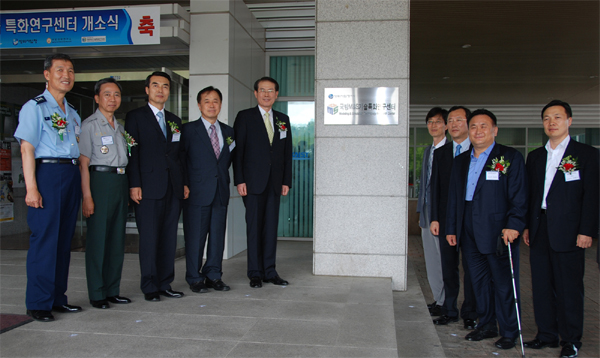 KAIST Opens M&S Technology Research Center
KAIST held an opening ceremony for a new defense research center focusing on modelling & simulation located at its main campus in Daejeon on Thursday (June 19).
The opening of the M&S Technology Research Center is aimed at developing technologies and processes to test, practice and operate newly-developed precision and micro weapons systems in virtual space. The center will be supported by two state-run defense agencies, the Defense Acquisition Program Administration and the Korean Agency for Defense Development.
The new research center is expected to receive a total of 11.5 billion won (US$11.2 million) research grants from the state for the next eight years until 2016. The center will be involved in the development of sophisticated, complex and inter-related weapons system and training research personnel in the specialized area.
The research center will undertake a total of 21 specific projects in collaboration with seven other universities in Korea. Also joining the projects are such overseas institutions as Georgia Institute of Technology and the U.S. Naval Post-Graduate School, and private defense solution providers including Posdata, Samsung Thales and LIG Nex 1.
The opening of the research center comes at a time when modelling and simulation gain growing importance as today"s armies employ more sophisticated, complex and inter-related. weapons systems and equipment than ever before.
Tae-Uk Lee, director of the research center said: "The opening of the center will spur development of operational technologies of precision and micro weapons system on our own, departing from dependence on advanced countries."
2008.06.19 View 18070
KAIST Opens M&S Technology Research Center
KAIST held an opening ceremony for a new defense research center focusing on modelling & simulation located at its main campus in Daejeon on Thursday (June 19).
The opening of the M&S Technology Research Center is aimed at developing technologies and processes to test, practice and operate newly-developed precision and micro weapons systems in virtual space. The center will be supported by two state-run defense agencies, the Defense Acquisition Program Administration and the Korean Agency for Defense Development.
The new research center is expected to receive a total of 11.5 billion won (US$11.2 million) research grants from the state for the next eight years until 2016. The center will be involved in the development of sophisticated, complex and inter-related weapons system and training research personnel in the specialized area.
The research center will undertake a total of 21 specific projects in collaboration with seven other universities in Korea. Also joining the projects are such overseas institutions as Georgia Institute of Technology and the U.S. Naval Post-Graduate School, and private defense solution providers including Posdata, Samsung Thales and LIG Nex 1.
The opening of the research center comes at a time when modelling and simulation gain growing importance as today"s armies employ more sophisticated, complex and inter-related. weapons systems and equipment than ever before.
Tae-Uk Lee, director of the research center said: "The opening of the center will spur development of operational technologies of precision and micro weapons system on our own, departing from dependence on advanced countries."
2008.06.19 View 18070 -
 Actress Han Makes Donation to KAIST
Actress and movie star Han Eunjung donated 100 million won ($98,000) to KAIST to help Korea"s prestigious research-oriented university continue its academic development on Wednesday (June 4).
In a donation ceremony held at the KAIST President"s office, she signed an agreement for donation.
Han said that she came to realize the importance of science and technology while filming a new movie based on a 15th century Joseon Dynasty episode featuring the development of a rocket-like firearm called "Singijeon." The blockbuster movie will be released in early August.
She also said that she was impressed by the first Korean astronaut So-Yeon Lee who took her undergraduate, master"s and doctorate degrees at KAIST, and decided to make a contribution to the school.
"I hope that I would be of any help in the development of KAIST in becoming one of the top research universities in the world," she said.
Han has been cast for the MBC drama "Lawyers of Korea" which will be aired starting from July.
2008.06.05 View 12340
Actress Han Makes Donation to KAIST
Actress and movie star Han Eunjung donated 100 million won ($98,000) to KAIST to help Korea"s prestigious research-oriented university continue its academic development on Wednesday (June 4).
In a donation ceremony held at the KAIST President"s office, she signed an agreement for donation.
Han said that she came to realize the importance of science and technology while filming a new movie based on a 15th century Joseon Dynasty episode featuring the development of a rocket-like firearm called "Singijeon." The blockbuster movie will be released in early August.
She also said that she was impressed by the first Korean astronaut So-Yeon Lee who took her undergraduate, master"s and doctorate degrees at KAIST, and decided to make a contribution to the school.
"I hope that I would be of any help in the development of KAIST in becoming one of the top research universities in the world," she said.
Han has been cast for the MBC drama "Lawyers of Korea" which will be aired starting from July.
2008.06.05 View 12340 -
 KAIST, ICU Agree to Merge
KAIST and the Information and Communications University, a state-run institution, decided to merge as they signed a memorandum of understanding for unification at the Westin Chosun Hotel in Seoul on May 23.
The MOU signing ceremony was attended by representatives of the two universities and related high-ranking government officials from the Ministry of Knowledge Economy and the Ministry of Education, Science and Technology.
Under the agreement, the two universities will form a joint committee to complete the merger process by the end of this year. According to the MOU, ICU will become the "IT Convergence Campus" (ICC) which will include KAIST"s IT related departments and research institutes. The projected ICC will be headed by a KAIST vice president, KAIST authorities said.
With the merger, the number of KAIST students in the IT area will increase to 2,850 from 1,951, while the number of IT-related faculty members will rise to 157 from 99.
ICU was established in 1997 by the Korean Ministry of Information and Communication, the Electronics and Telecommunications Research Institute, and some major Korean IT companies. Located in Daedeok Science Town in Daejeon where KAIST is also situated, ICU started as a graduate school and added the undergraduate course in 2002. It currently has a total enrollment of 1,121 students -- 481undergraduate students, 324 graduate students and 316 doctorate students.
KAIST said that it will treat ICU professors and staff equally after the merger. This year, the two universities will separately conduct freshmen recruitment procedures for 2009, but will then unify recruitment.
The unification of the two institutions is expected to give KAIST the competitive edge through a larger faculty, student body, and expanded facilities.
The agreement put an end to extended negotiations for merger which started in July 2006. The talk of merging the two universities surfaced when the Board of Audit and Inspection concluded that the government"s direct financial support for ICU was unlawful as ICU was established as a private school. When ICU was established in 1997, the Ministry of Information and Communication provided 200 billion won as the basic endowment and has continually provided 10 billion won in operating funds each year.
2008.05.22 View 15505
KAIST, ICU Agree to Merge
KAIST and the Information and Communications University, a state-run institution, decided to merge as they signed a memorandum of understanding for unification at the Westin Chosun Hotel in Seoul on May 23.
The MOU signing ceremony was attended by representatives of the two universities and related high-ranking government officials from the Ministry of Knowledge Economy and the Ministry of Education, Science and Technology.
Under the agreement, the two universities will form a joint committee to complete the merger process by the end of this year. According to the MOU, ICU will become the "IT Convergence Campus" (ICC) which will include KAIST"s IT related departments and research institutes. The projected ICC will be headed by a KAIST vice president, KAIST authorities said.
With the merger, the number of KAIST students in the IT area will increase to 2,850 from 1,951, while the number of IT-related faculty members will rise to 157 from 99.
ICU was established in 1997 by the Korean Ministry of Information and Communication, the Electronics and Telecommunications Research Institute, and some major Korean IT companies. Located in Daedeok Science Town in Daejeon where KAIST is also situated, ICU started as a graduate school and added the undergraduate course in 2002. It currently has a total enrollment of 1,121 students -- 481undergraduate students, 324 graduate students and 316 doctorate students.
KAIST said that it will treat ICU professors and staff equally after the merger. This year, the two universities will separately conduct freshmen recruitment procedures for 2009, but will then unify recruitment.
The unification of the two institutions is expected to give KAIST the competitive edge through a larger faculty, student body, and expanded facilities.
The agreement put an end to extended negotiations for merger which started in July 2006. The talk of merging the two universities surfaced when the Board of Audit and Inspection concluded that the government"s direct financial support for ICU was unlawful as ICU was established as a private school. When ICU was established in 1997, the Ministry of Information and Communication provided 200 billion won as the basic endowment and has continually provided 10 billion won in operating funds each year.
2008.05.22 View 15505 -
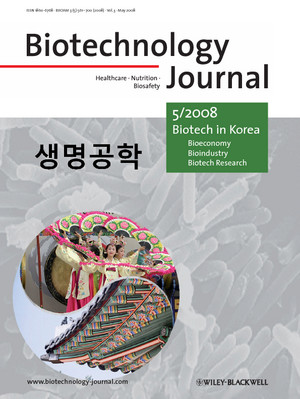 International Science Journal Spotlights Korean Biotechnology
Biotechnology Journal published by German-based Wiley-VCH, one of the world"s major scientific and technical publishers, devoted its entire special edition for May to biotechnology in Korea.
The monthly journal"s special issue was planned by KAIST Professor Sang-Yup Lee of the Chemical and Biomolecular Engineering Department who is one of the journal"s two editors-in-chief.
The special issue outlines the current status and future prospect of biotechnology in Korea, and presents five review papers and eight original papers by leading Korean biotech researchers to showcase recent developments in Korean biotechnology. Among these papers, a review by Dr. Byung-Hwan Hyeon and his colleagues describes in detail the Korean biotechnology strategies represented by "Bio-Vision 2016," and another by Dr. Ji-Hyun Kim and his collaborators presents recent progress in microbial genome projects in Korea.
In the editorial of the journal, Prof. Lee said, "Heavy industry and IT industry have been the two drivers of Korean economic growth. Korea is now considering biotechnology as its next generation growth engine."
Underscoring the growing importance of fusion research, he mentioned that integration of biotechnology with information technology and nanotechnology is advancing rapidly in Korea. Another special edition of Biotechnology Journal focusing on these exciting biotech developments in Korea is planned for the future.
2008.05.20 View 15516
International Science Journal Spotlights Korean Biotechnology
Biotechnology Journal published by German-based Wiley-VCH, one of the world"s major scientific and technical publishers, devoted its entire special edition for May to biotechnology in Korea.
The monthly journal"s special issue was planned by KAIST Professor Sang-Yup Lee of the Chemical and Biomolecular Engineering Department who is one of the journal"s two editors-in-chief.
The special issue outlines the current status and future prospect of biotechnology in Korea, and presents five review papers and eight original papers by leading Korean biotech researchers to showcase recent developments in Korean biotechnology. Among these papers, a review by Dr. Byung-Hwan Hyeon and his colleagues describes in detail the Korean biotechnology strategies represented by "Bio-Vision 2016," and another by Dr. Ji-Hyun Kim and his collaborators presents recent progress in microbial genome projects in Korea.
In the editorial of the journal, Prof. Lee said, "Heavy industry and IT industry have been the two drivers of Korean economic growth. Korea is now considering biotechnology as its next generation growth engine."
Underscoring the growing importance of fusion research, he mentioned that integration of biotechnology with information technology and nanotechnology is advancing rapidly in Korea. Another special edition of Biotechnology Journal focusing on these exciting biotech developments in Korea is planned for the future.
2008.05.20 View 15516 -
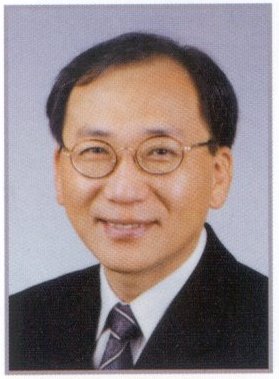 World Micromachine Summit to Open in Daejeon
The 2008 World Micromachine Summit will be held at Hotel Riviera in Daejeon for a four-day run from April 30, drawing worldwide industrial and academic leaders in the micro-nano-technology (MNT).
Organizers say that 76 delegates and 56 observers from 19 countries and regions will take part in this year"s Micromachine Summit. Prof. Cho Young-ho of the Department of Bio & Brain Engineering of KAIST will play host to the annual event.
Participants will discuss the progress of micro-nano-technology in each country and region development of national policies in this area. The Summit was first organized in 1995 by the Micromachine Center of Japan with representatives from 10 countries participating. They were Australia, Canada, Germany, Italy, Japan, the Netherlands, Switzerland, the United Kingdom, and the United States.
Korea was first invited to the conference in 1999. Since then, Korea has played an active role in promoting technological exchanges among nations and has conducted presentations and discussions on major technological breakthroughs.
During the four-day run, each delegation will outline their country"s policies and strategies and present local features on focused areas including this year"s main theme, "Micromachine towards Technology Convergence Era."
The gathering will offer a valuable opportunity for the participants to exchange and collect information on the current state of the MNT, as well as providing a forum for worldwide networking of leaders in the area.
2008.04.29 View 14469
World Micromachine Summit to Open in Daejeon
The 2008 World Micromachine Summit will be held at Hotel Riviera in Daejeon for a four-day run from April 30, drawing worldwide industrial and academic leaders in the micro-nano-technology (MNT).
Organizers say that 76 delegates and 56 observers from 19 countries and regions will take part in this year"s Micromachine Summit. Prof. Cho Young-ho of the Department of Bio & Brain Engineering of KAIST will play host to the annual event.
Participants will discuss the progress of micro-nano-technology in each country and region development of national policies in this area. The Summit was first organized in 1995 by the Micromachine Center of Japan with representatives from 10 countries participating. They were Australia, Canada, Germany, Italy, Japan, the Netherlands, Switzerland, the United Kingdom, and the United States.
Korea was first invited to the conference in 1999. Since then, Korea has played an active role in promoting technological exchanges among nations and has conducted presentations and discussions on major technological breakthroughs.
During the four-day run, each delegation will outline their country"s policies and strategies and present local features on focused areas including this year"s main theme, "Micromachine towards Technology Convergence Era."
The gathering will offer a valuable opportunity for the participants to exchange and collect information on the current state of the MNT, as well as providing a forum for worldwide networking of leaders in the area.
2008.04.29 View 14469 -
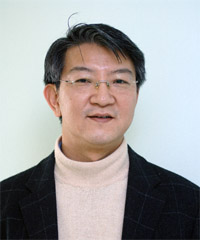 Prof. Sang-Yup Lee Co-Editor-in-Chief of Biotechnology Journal
Prof. Sang-Yup Lee of KAIST"s Department of Chemical and Biomolecular Engineering has been appointed as co-editor-in-chief of Biotechnology Journal published by Wiley-VCH, a German-based leading technical publisher, university authorities said Tuesday, April 15.
Launched in January 2006, Biotechnology Journal has covered biological process, brain ailments, biological medicine, protein design and other applied bio-sciences.
Starting in May, Lee will be responsible for setting and overseeing editorial direction of the journal along with Prof. Alois Jungbauer of Austria.
Professor Lee has been gaining recognition in and outside the country for his research on metabolic engineering. In 2002, he was chosen as one of Asia"s next generation leaders by the World Economic Forum. In 2007, Lee was elected a fellow of the American Association for the Advancement of Science, the world"s largest general scientific society. He is also serving as an editorial member of more than ten international journals including Biotechnology & Bioengineering.
Awards and honors include the First Young Scientist"s Award from the President of Korea, the Scientist of the Month Award from the Korean Ministry of Science and Technology, the Best Patent Award from Korean Intellectual Property Office, the Citation Classic Award from ISI, USA, and the First Elmer Gaden Award (1999 Best Paper Award) from Biotechnology and Bioengineering (John Wiley & Sons, USA) at the ACS National meeting.
2008.04.16 View 14906
Prof. Sang-Yup Lee Co-Editor-in-Chief of Biotechnology Journal
Prof. Sang-Yup Lee of KAIST"s Department of Chemical and Biomolecular Engineering has been appointed as co-editor-in-chief of Biotechnology Journal published by Wiley-VCH, a German-based leading technical publisher, university authorities said Tuesday, April 15.
Launched in January 2006, Biotechnology Journal has covered biological process, brain ailments, biological medicine, protein design and other applied bio-sciences.
Starting in May, Lee will be responsible for setting and overseeing editorial direction of the journal along with Prof. Alois Jungbauer of Austria.
Professor Lee has been gaining recognition in and outside the country for his research on metabolic engineering. In 2002, he was chosen as one of Asia"s next generation leaders by the World Economic Forum. In 2007, Lee was elected a fellow of the American Association for the Advancement of Science, the world"s largest general scientific society. He is also serving as an editorial member of more than ten international journals including Biotechnology & Bioengineering.
Awards and honors include the First Young Scientist"s Award from the President of Korea, the Scientist of the Month Award from the Korean Ministry of Science and Technology, the Best Patent Award from Korean Intellectual Property Office, the Citation Classic Award from ISI, USA, and the First Elmer Gaden Award (1999 Best Paper Award) from Biotechnology and Bioengineering (John Wiley & Sons, USA) at the ACS National meeting.
2008.04.16 View 14906